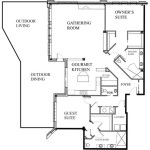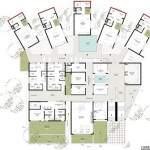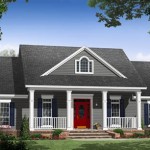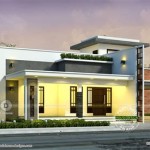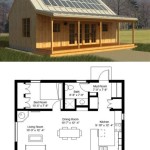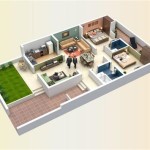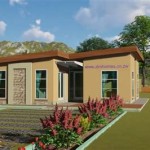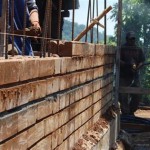20x30 South Facing House Plans: Optimizing Sunlight and Space
A south-facing house offers numerous advantages, particularly in terms of natural light and energy efficiency. Harnessing the sun's path effectively can significantly reduce energy consumption for heating and lighting. This article explores the nuances of designing 20x30 south-facing house plans, focusing on maximizing these benefits while creating comfortable and functional living spaces.
The primary advantage of a south-facing orientation is the abundance of natural light throughout the day. In colder climates, this passive solar gain contributes to warmth during winter months, reducing reliance on artificial heating systems. Summer cooling loads can also be minimized with proper shading strategies incorporated into the design.
When planning a 20x30 south-facing house, careful consideration should be given to window placement and sizing. Large windows on the south facade allow sunlight to penetrate deeply into the home, illuminating living areas and passively heating the space. However, excessively large windows can lead to overheating in the summer. Strategically placed overhangs, awnings, or deciduous trees can provide shade during summer while allowing the winter sun to penetrate.
The layout of the house plays a crucial role in optimizing solar gain. Living spaces, such as living rooms and family rooms, are ideally positioned on the south side to take advantage of the natural light and warmth. Bedrooms and other private spaces can be located on the north or east sides. This arrangement minimizes heat gain in bedrooms during summer, promoting better sleep quality.
Room placement should also consider the daily and seasonal path of the sun. For instance, kitchens and dining areas might benefit from east-facing windows to capture the morning sun. West-facing windows, while providing afternoon light, can also introduce excessive heat gain in summer. Careful planning and shading considerations are essential for west-facing rooms.
Thermal mass, incorporating materials that absorb and store heat, can significantly enhance the energy efficiency of a south-facing house. Concrete floors, brick walls, or stone fireplaces can absorb solar radiation during the day and release it slowly at night, maintaining a more stable indoor temperature. This reduces the need for both heating and cooling.
Insulation is a critical factor in any home, but particularly in south-facing designs. Proper insulation prevents heat loss during winter and minimizes heat gain during summer. High-quality insulation in walls, roofs, and floors contributes significantly to energy efficiency and overall comfort.
Ventilation is another crucial aspect of south-facing house design. Cross-ventilation, achieved through strategically placed windows and doors, can help regulate indoor temperatures and improve air quality. Utilizing natural breezes can significantly reduce the need for air conditioning during warmer months.
Landscaping can also play a role in optimizing the microclimate around a south-facing house. Deciduous trees planted on the south side can provide shade in summer while allowing sunlight to penetrate in winter. Evergreen trees or shrubs on the north side can act as windbreaks, reducing heat loss during colder months.
Beyond the practical aspects of energy efficiency, a south-facing orientation offers aesthetic benefits. The abundance of natural light creates bright and inviting living spaces, enhancing the overall feel of the home. The connection to the outdoors can be further strengthened through large windows and strategically placed patios or decks.
While a 20x30 footprint might seem compact, careful planning can yield a spacious and functional layout. Open-plan designs can create a sense of spaciousness, while utilizing vertical space with high ceilings can add volume and visual interest. Multi-functional spaces, such as combined kitchen and dining areas, can maximize space utilization.
Consider incorporating sustainable building materials and practices into the design. Using locally sourced materials reduces transportation costs and environmental impact. Employing recycled or reclaimed materials further contributes to sustainability. Rainwater harvesting systems can be integrated to conserve water for irrigation or other non-potable uses.
Consulting with an experienced architect or building designer is essential for realizing the full potential of a south-facing 20x30 house plan. They can provide expert guidance on optimizing the design for passive solar gain, natural ventilation, and energy efficiency, ensuring a comfortable and sustainable home.
A well-designed 20x30 south-facing house can offer a comfortable, energy-efficient, and aesthetically pleasing living environment. Careful consideration of solar orientation, window placement, thermal mass, insulation, ventilation, and landscaping can maximize the benefits of natural light and minimize energy consumption. By integrating these principles, homeowners can create a sustainable and enjoyable living space.
Exploring various design options and consulting with professionals is crucial for creating a personalized and functional home that harmonizes with the environment and meets individual needs. The 20x30 footprint provides a versatile canvas for creative design solutions that prioritize comfort, sustainability, and aesthetic appeal.

Best East Facing Home Plans According To Vastu Shastra House Plan And Designs Books

Best East Facing Home Plans According To Vastu Shastra House Plan And Designs Books

28 30 East Face 3bhk House Plan Map Naksha Design

27 X 40 Feet House Plan Design No 215

Best East Facing Home Plans According To Vastu Shastra House Plan And Designs Books

15 X 30 House Plan Ii Ghar Ka Naksha 450 Sqft

Small Home Design

30 Feet By 60 30x60 House Plan

30 Feet By 60 30x60 House Plan

35x60 House Plan 35 60 Home Design By 2100 Sqft Ghar Naksha

